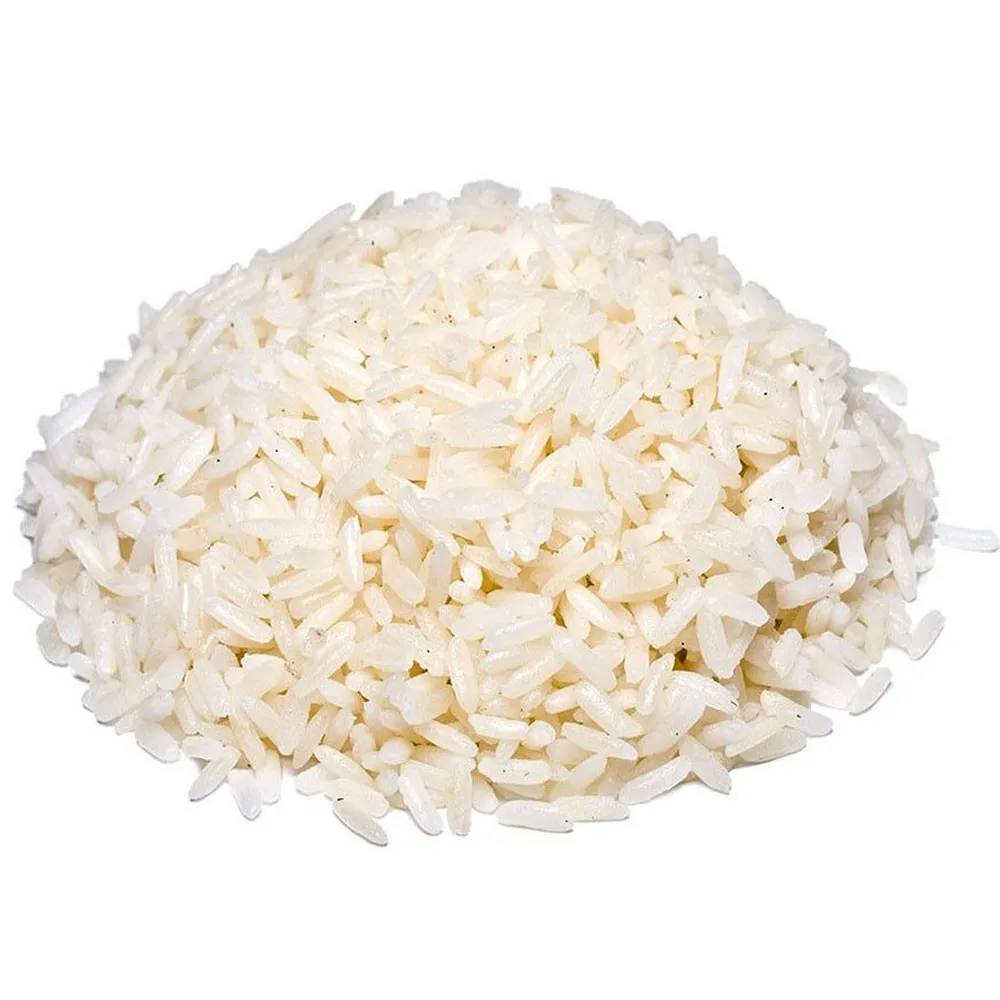
| Glycemic Index | Glycemic Load |
70.0
|
56.0
|
The glycemic index (GI) of white rice standard equals to 70.0, which classifies it as a high GI food. The glycemic load (GL) of white rice standard is equal to 56.0, which classifies it as a high GL food.
| Nutrition Facts | |
| Calories (kcal) | 130 |
| Carbohydrates (g) | 28 |
| Proteins (g) | 2.7 |
| Fats (g) | 0.3 |
100 grams of white rice contain 130 kcal (544 kJ), 2.7 grams of proteins, 28 grams of carbohydrates, and 0.3 grams of fats.
If you wish to know more about the glycemic indices of different rice we have covered this in the glycemic index of rice article.
White rice is a staple food consumed all over the world, particularly in Asian countries. It is a grain that has been milled and polished to remove the outer bran and germ layers, resulting in a product that is lower in fiber and other nutrients compared to brown rice. In this article, we will discuss the nutritional benefits, drawbacks, nutrition facts, and health benefits of white rice.
Nutrition Facts:
White rice is a carbohydrate-rich food that is low in fat and protein. One cup of cooked white rice, which is approximately 158 grams, contains approximately 205 calories, 4.3 grams of protein, 0.4 grams of fat, and 45 grams of carbohydrates. It is also a good source of thiamine and niacin, which are important B vitamins.
Health Benefits:
- Provides Energy: White rice is a rich source of carbohydrates, which are the body’s primary source of energy. It provides the necessary energy to fuel physical activities and mental functions.
- Easy to Digest: White rice is easy to digest, making it a suitable food for people with digestive problems. It is also recommended for people recovering from illnesses or surgeries.
- Gluten-Free: White rice is naturally gluten-free, making it a suitable food for individuals with celiac disease or gluten intolerance.
- Lowers Risk of Certain Diseases: Some studies have shown that consuming white rice may lower the risk of developing certain diseases such as heart disease, diabetes, and obesity. However, more research is needed to confirm these findings.
- Can be Fortified: In some countries, white rice is fortified with essential vitamins and minerals such as iron, folate, and vitamin A, which can help to improve overall nutrition.
Drawbacks:
- Low in Fiber: White rice is low in fiber compared to brown rice, which can lead to digestive problems and an increased risk of chronic diseases such as colon cancer.
- High in Carbohydrates: White rice is a carbohydrate-rich food and can lead to spikes in blood sugar levels, which can be harmful to individuals with diabetes or those at risk for developing diabetes.
- Low in Nutrients: White rice is lower in nutrients compared to brown rice. The milling and polishing process removes the outer bran and germ layers, which are rich in fiber, vitamins, and minerals.
- May Contain Arsenic: Some types of white rice may contain high levels of arsenic, which is a toxic substance that can increase the risk of cancer and other health problems.
In conclusion, white rice is a staple food consumed all over the world. It provides energy, is easy to digest, and is gluten-free. However, it is low in fiber, nutrients, and can lead to spikes in blood sugar levels. Additionally, some types of white rice may contain high levels of arsenic. It is recommended to consume white rice in moderation as part of a balanced and varied diet. Choosing whole grains such as brown rice, quinoa, or barley can be a healthier alternative to white rice.


